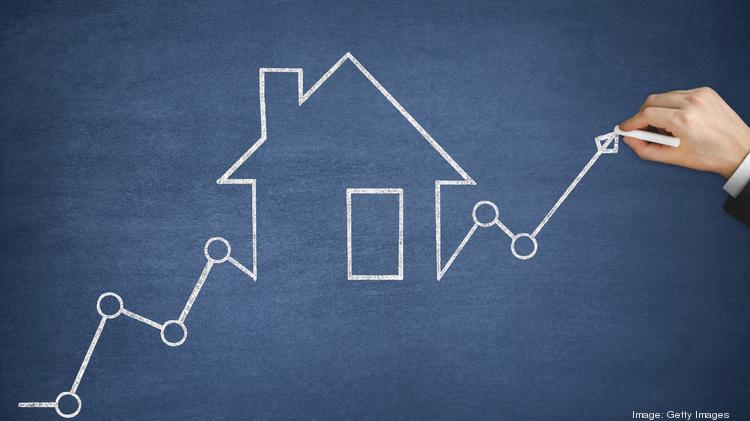
Despite an interest-rate hike of three-quarters of a percent by the Federal Reserve on Wednesday, and additional increases likely still to come, some housing economists aren't expecting another big surge in mortgage rates now or in the coming months.
A recent slowdown observed in the U.S. housing market has largely stemmed from the sudden jump in mortgage rates felt in late spring and early summer, in line with the Fed's decision to move up interest rates in an ongoing effort to combat inflation.
Existing-home sales declined for the fifth straight month in June, down 5.4% from May and 14.2% from the prior year, according to the National Association of Realtors. Unsold inventory was at three months' supply nationally in June, up from 2.6 months in May and 2.5 months in June 2021, likely attributed to less buyer demand.
Lawrence Yun, chief economist at the NAR, said in a mid-year forecast event by the association before Wednesday's Fed meeting that the mortgage market has already priced in additional rate hikes, including yesterday's increase. Plus, fixed mortgage rates are tied to the 10-year Treasury rate, although other metrics, including inflation, are factored in.
"It’s possible that we may be topping out in mortgage rates, independent of what the Fed may be doing in future months," Yun said.
After an average of 3.45% in January, the 30-year fixed mortgage rate jumped to an average of 4.98% in April, then 5.52% in June, according to Freddie Mac data. More recently, that rate has hovered in the mid-5% range.
That doesn't mean mortgage rates will completely stabilize but smaller swings up and down are more likely, Yun and others predict.
Mark Vitner, senior economist at Wells Fargo & Co. (NYSE: WFC), said in an email there probably will not be a repeat of the abrupt move seen this past spring.
"There is a growing sense that the Fed is getting close to finishing hiking rate(s), and the markets are expecting the Fed to cut interest rates next year," Vitner continued. "Mortgage rates have already likely seen their highs for this year but will probably spend much of the rest of the year a quarter percentage point above or below 5.5%."
Skylar Olsen, chief economist at Seattle-based Zillow Group Inc. (NASDAQ: ZG), also said in an interview mortgage rates will likely be "steady as she goes" for the foreseeable future, even with the additional expected hikes from the Fed.
But if mortgage rates remain somewhat stable, hovering in the mid- to upper 5% range, does that mean the housing-market slowdown that's occurred in recent weeks in response to skyrocketing mortgage rates will reverse course?
Olsen said affordability because of higher mortgage rates and home prices will still be the key hurdle for a lot of households.
"If interest rates can remain stable, then changes and behavior are much more driven by long-term dynamics, which are still solid: a big millennial generation, a boomer generation downsizing," Olsen said. "There’s a lot in the housing market that’s not going to change as much as (people might) think, but we are absolutely going into a period where the volumes and quantities are going to slow."
Thursday morning, the U.S. Bureau of Economic Analysis reported real gross domestic product declined for the second consecutive quarter in Q2, at an annualized rate of 0.9%. The U.S. economy slowed at a rate of 1.6% in Q1, which initially raised the possibility of the economy heading into a recession.
Economists have debated what will signal if the country is in a recession, with some saying two consecutive quarters of negative GDP growth translates to the U.S. economy being in a recession. The Business Cycle Dating Committee, part of the National Bureau of Economic Research, officially decides when the national economy is in a recession, but those evaluations are typically made retroactively.
The NBER says on its website a recession involves a significant decline in economic activity that is spread across the economy and lasts more than a few months. But depth, diffusion and duration — the three key criteria named by the department in determining the state of the economy — is somewhat interchangeable, and extreme conditions revealed by one criterion may partially offset weaker indications from another.
And what's making the current economic situation "bizarre," as Yun put it, is a continued strong job market — an important gauge that's at odds with a typical recessionary period.
In June, U.S. employers added 372,000 jobs, and the unemployment rate remained unchanged from a month prior, at 3.6%, according to the U.S. Department of Labor.
Federal Reserve Chair Jerome Powell said in a news conference Wednesday while there is a slowdown in growth, he pointed to what he called very strong data coming out of the labor market. He said he didn't think the U.S. was in a recession currently.
"In all probability, demand is still strong, and the economy is still on track to grow this year, but the slowdown in the second quarter is notable and we’ll be watching that," Powell told reporters.
Source: Austin Business Journal

Leave A Comment